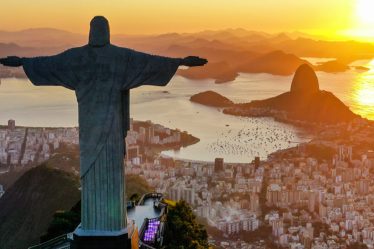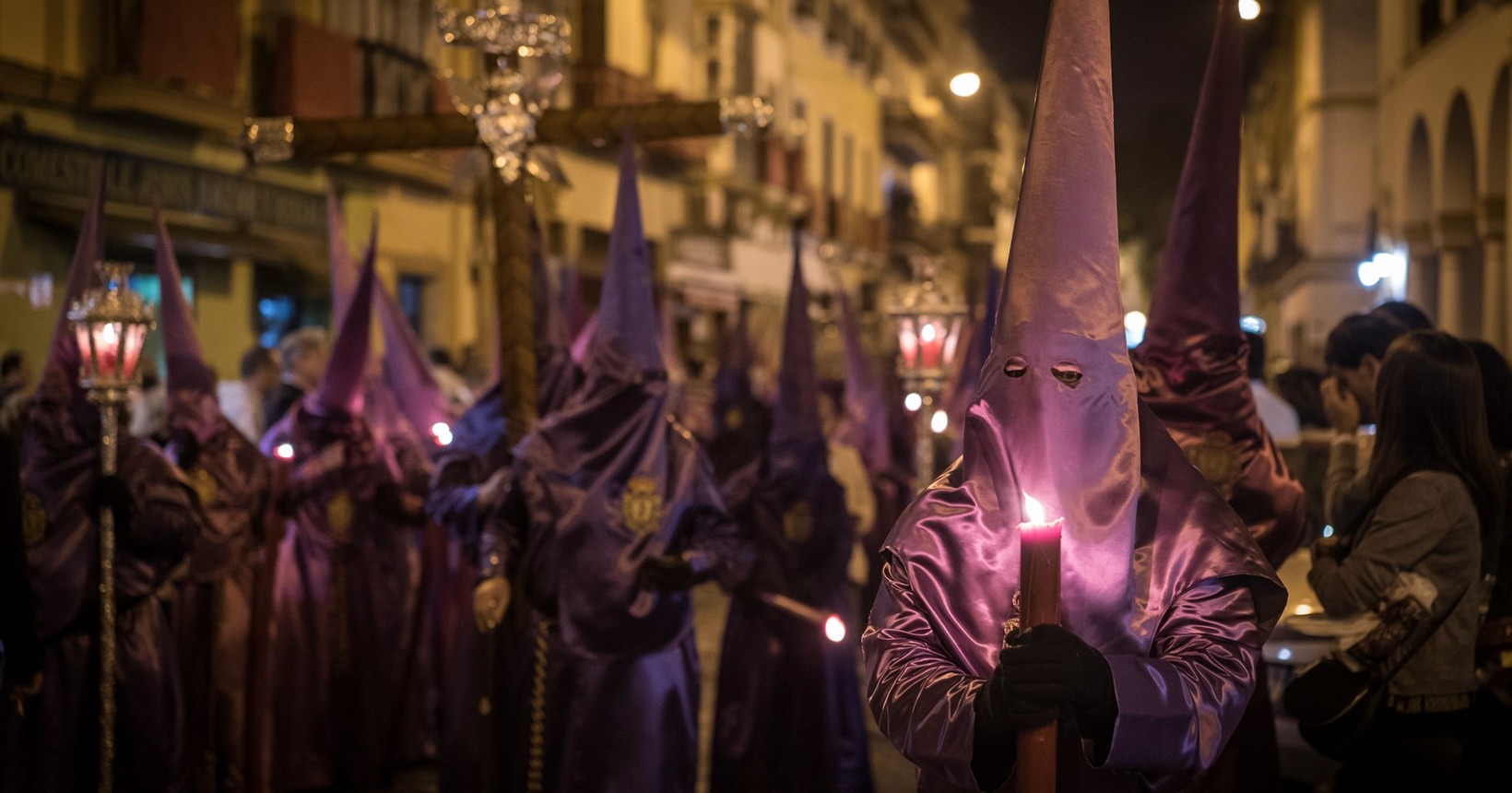
For hundreds of years, faith and tradition have taken thousands of people to the streets during Holy Week in Seville, in Spain. Declared as a Festival of International Tourist Interest, the celebration has been taking place since the 16th century in the city famous for flamenco and bullfighting.
Held at the end of March, at the beginning of spring, you need to prepare for the event if you visit Seville at this time of year, as everything is impacted by the historical, cultural, artistic and religious celebration. I participated in Holy Week in Seville and I share a little of that experience in this post.
Travel more while spending less! Download the Melhores Destinos app and don’t miss out on airline ticket promotions!
Photo: Visit Sevilla/Disclosure
Holy Week in Seville
Holy Week is a Christian religious tradition that celebrates the Passion, Death and Resurrection of Jesus Christ. Celebrated in different places around the world, the festival in Seville gained more importance from the 16th century onwards, but it was already held in the Middle Ages.
Without a doubt, only those who live know what it's like to participate in a centuries-old and cultural event like this, whether religious or not. Holy Week in Seville revives the resistance of traditions over the centuries and moves a city with more than half a million inhabitants.
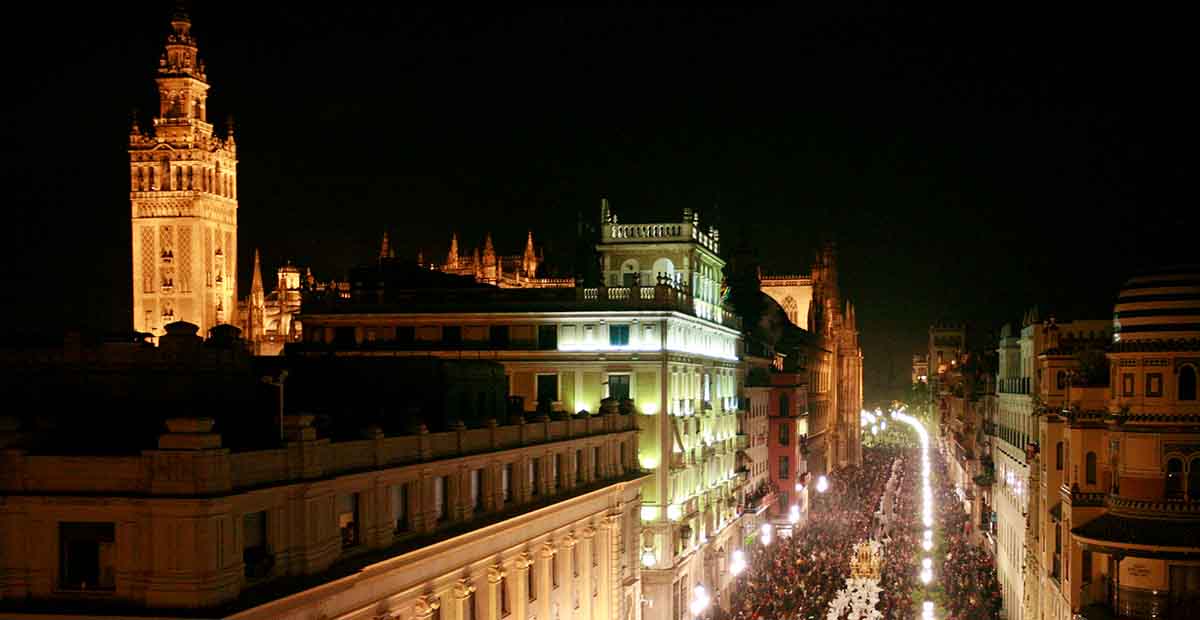
Photo: Visit Sevilla/Disclosure
Holy Week Processions
There are many details and the Catholic program for Holy Week in Seville is extensive, but, in a very simplistic and summarized way, the event stands out for its processions.
Held as a devotion, the processions are led by Nazarenes, devotees who are part of the brotherhoods and can be identified from afar by their unusual clothing to Brazilian eyes.
Nazarenes
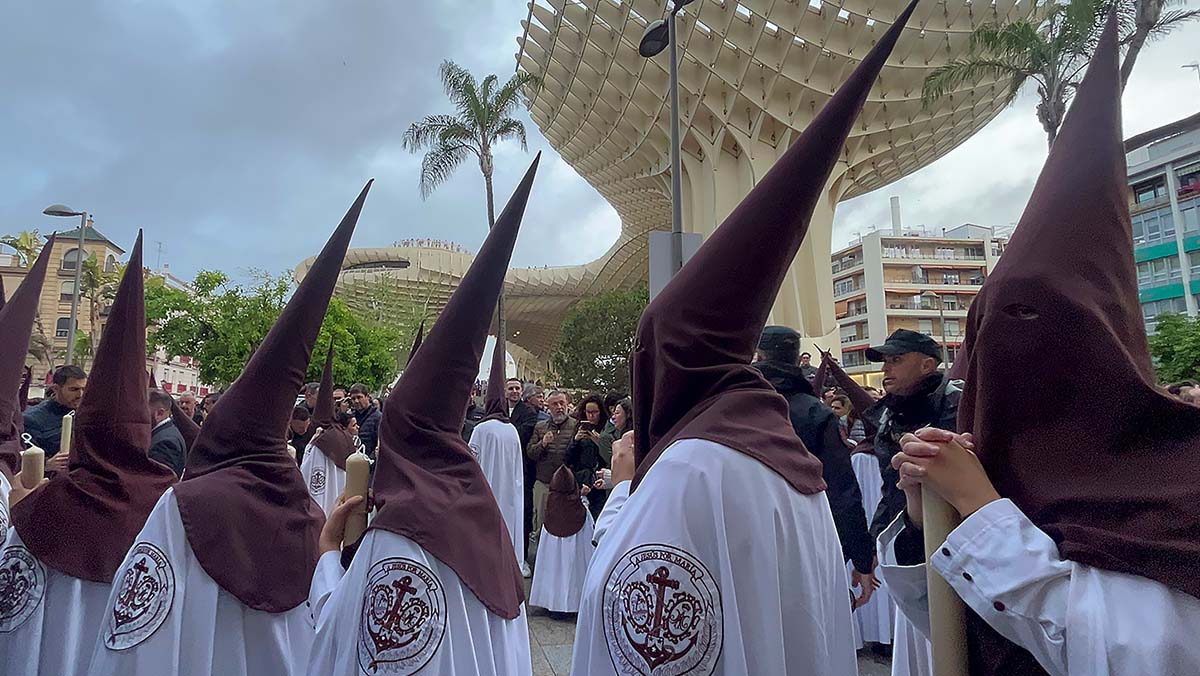
Photo: Mariana Kateivas/Best Destinations
With specific clothes, symbols and colors, the Nazarenes stand out for wearing uniforms and a type of cone-shaped hat. Called “capirote”this hat covers the Nazarene's entire face, leaving only small holes in the eyes, and is used as a sign of penance (it is worth researching the symbolism of each item of clothing, as they are full of meanings and history).
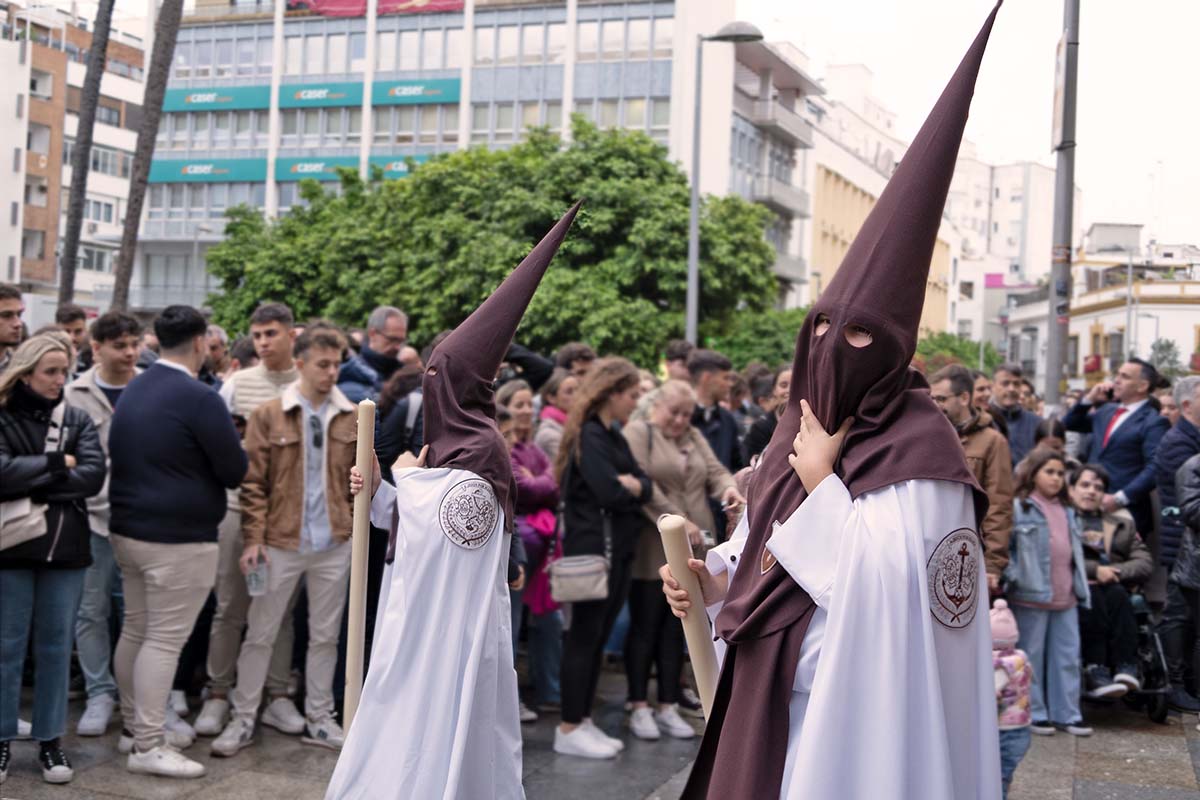
Photo: Mariana Kateivas/Best Destinations
Nazarenes may also lead the procession carrying a large candle or a cross, also as a sign of penance.
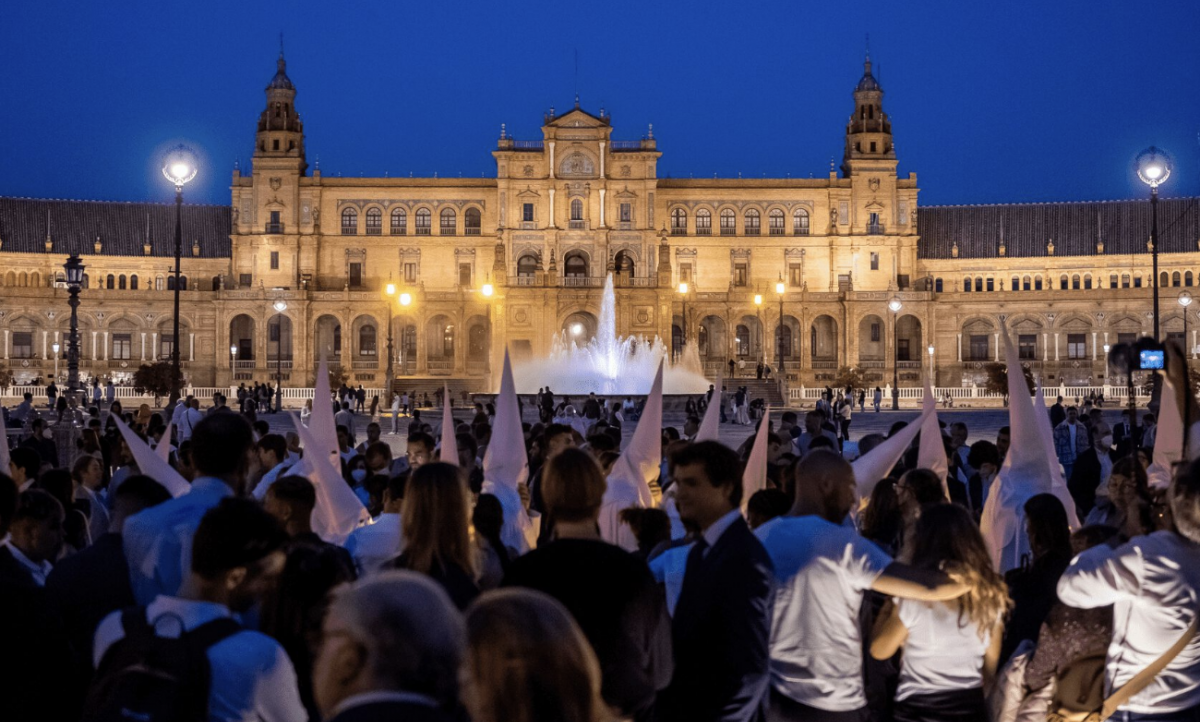
Photo: Visit Sevilla/Disclosure
Images
During the procession, the so-called “costaleros” carry on their shoulders/neck a heavy structure where sacred images are located, such as that of Jesus and the Virgin Mary. These structures are called “steps” and can weigh more than a ton. Therefore, costaleros have to prepare themselves before Holy Week and need to be very careful during this symbolic (and difficult) transport.
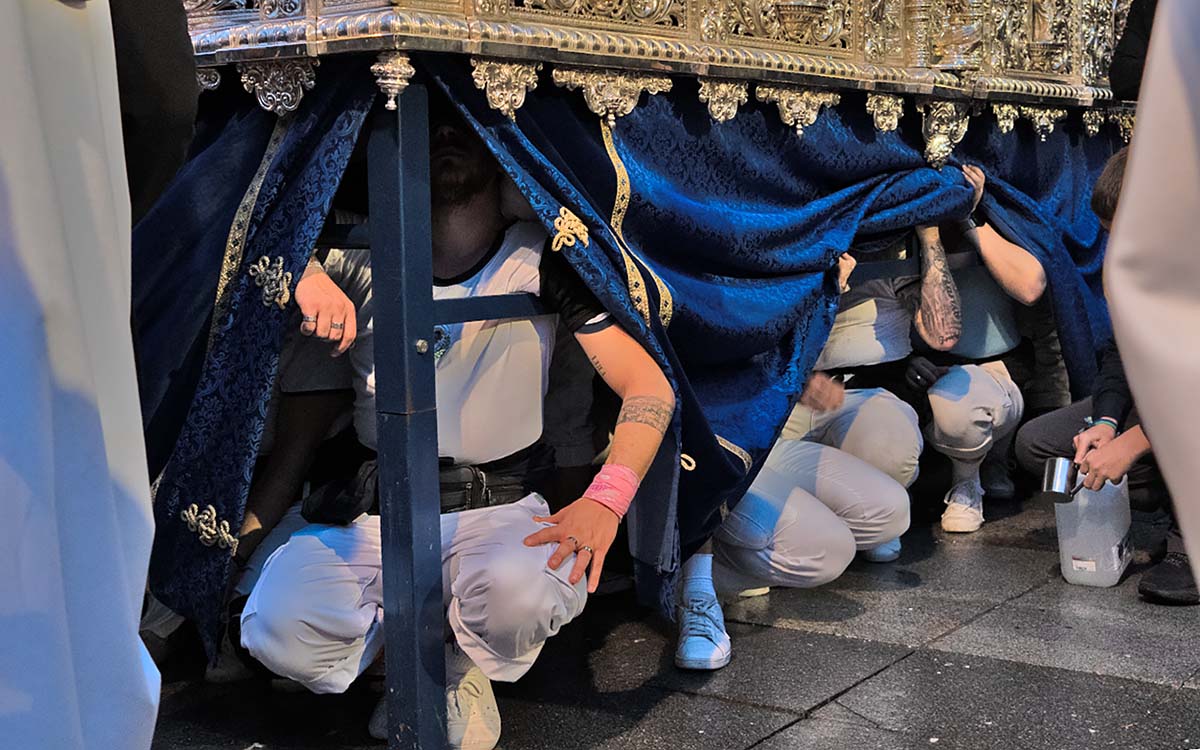
Photo: Mariana Kateivas/Best Destinations
I saw the costaleros rehearsal weeks before the processions and I was surprised by how much effort it took to upload the images! Everyone needs to walk at the same pace to make transportation viable and without hurting them.
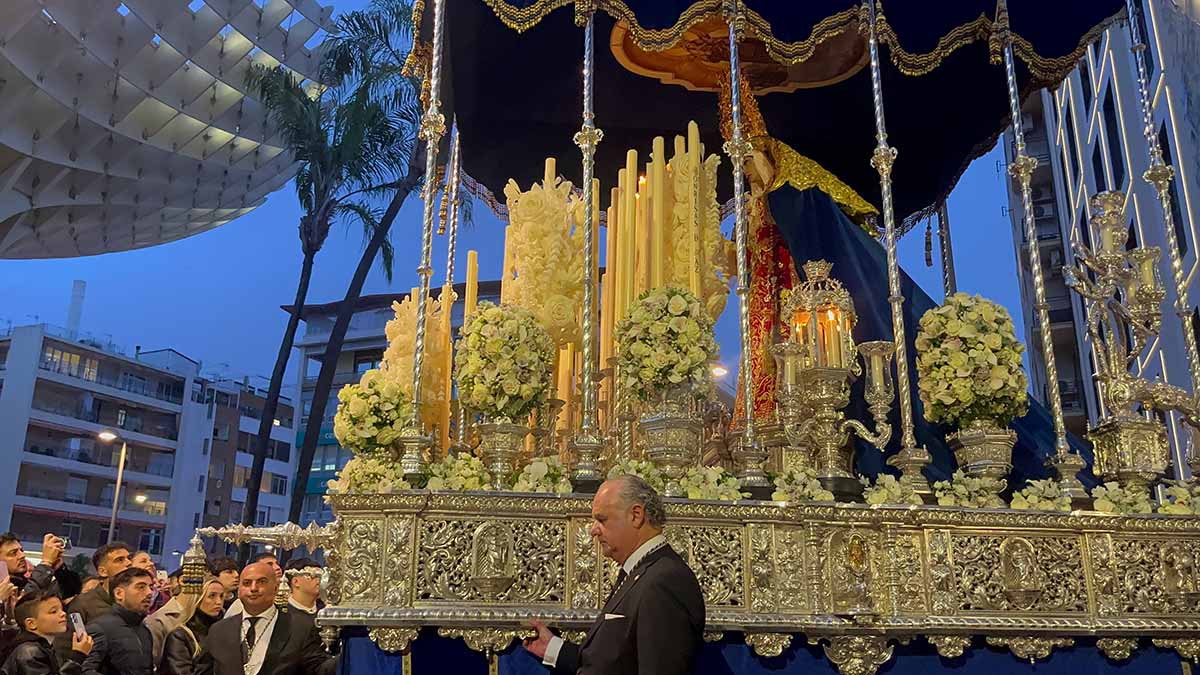
Photo: Mariana Kateivas/Best Destinations
Each brotherhood takes the images they worship in churches throughout the year. Many of the images are sacred sculptures carved from wood, made in the 16th, 17th and 18th centuries. Some are covered in gold and have traces of Baroque art.
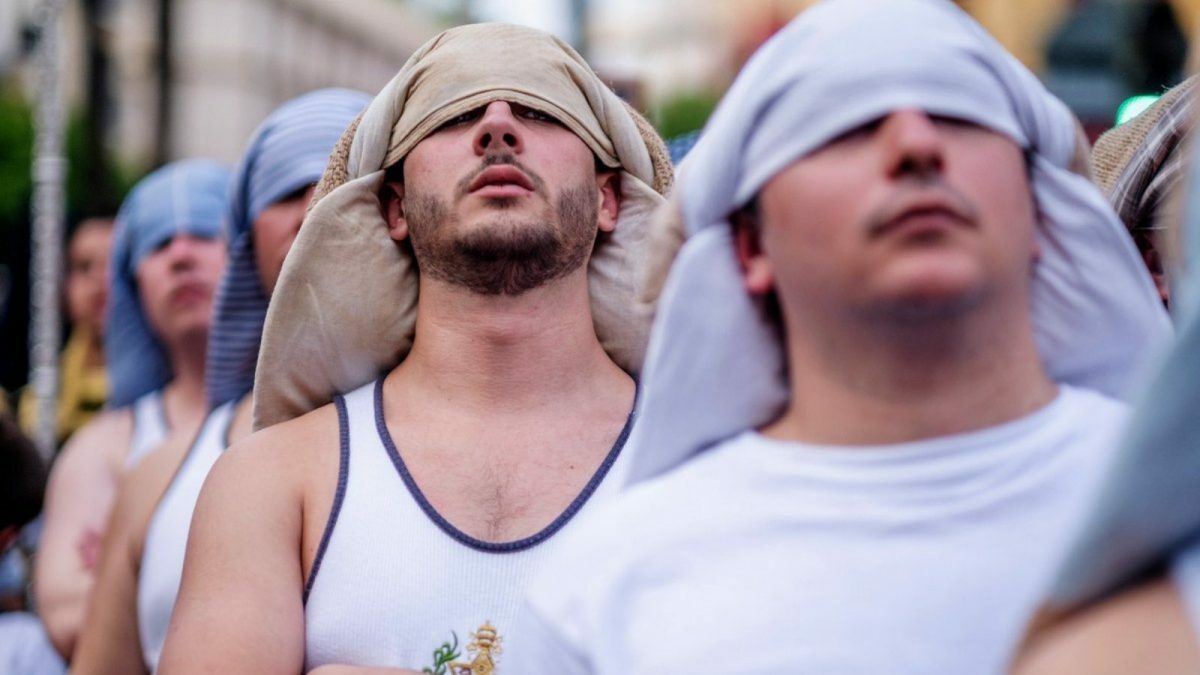
Photo: Visit Sevilla/Disclosure
Bands
After the images pass, a band may or may not accompany the procession. Whether or not there will be accompaniment from the musical ensemble will depend on each brotherhood.
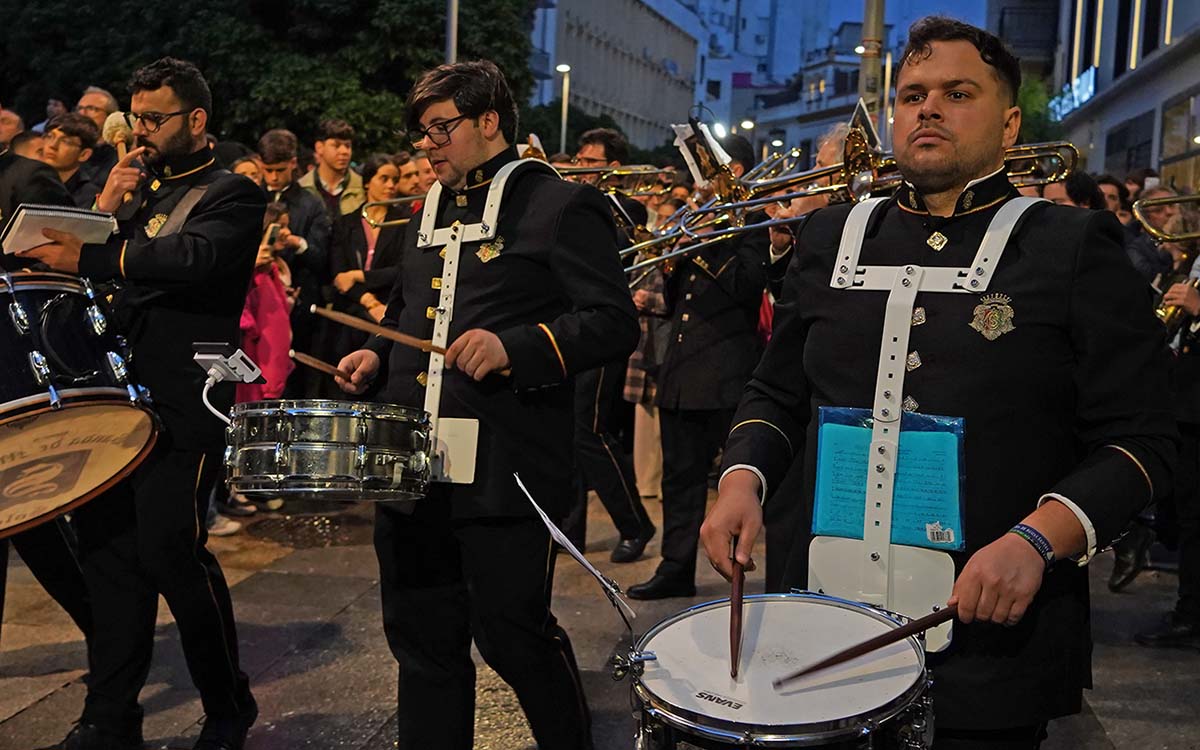
Photo: Mariana Kateivas/Best Destinations
Depending on the location of the church and the route taken, the procession can take hours and participants from the brotherhoods can walk a long way, always having Seville Cathedral as their destination.
Tradition
More than 70 sororities and fraternities (fraternities) are participating in Holy Week in Seville this year. The day, time and itinerary are different, so that the brotherhoods do not cross paths on the way to Seville Cathedral.
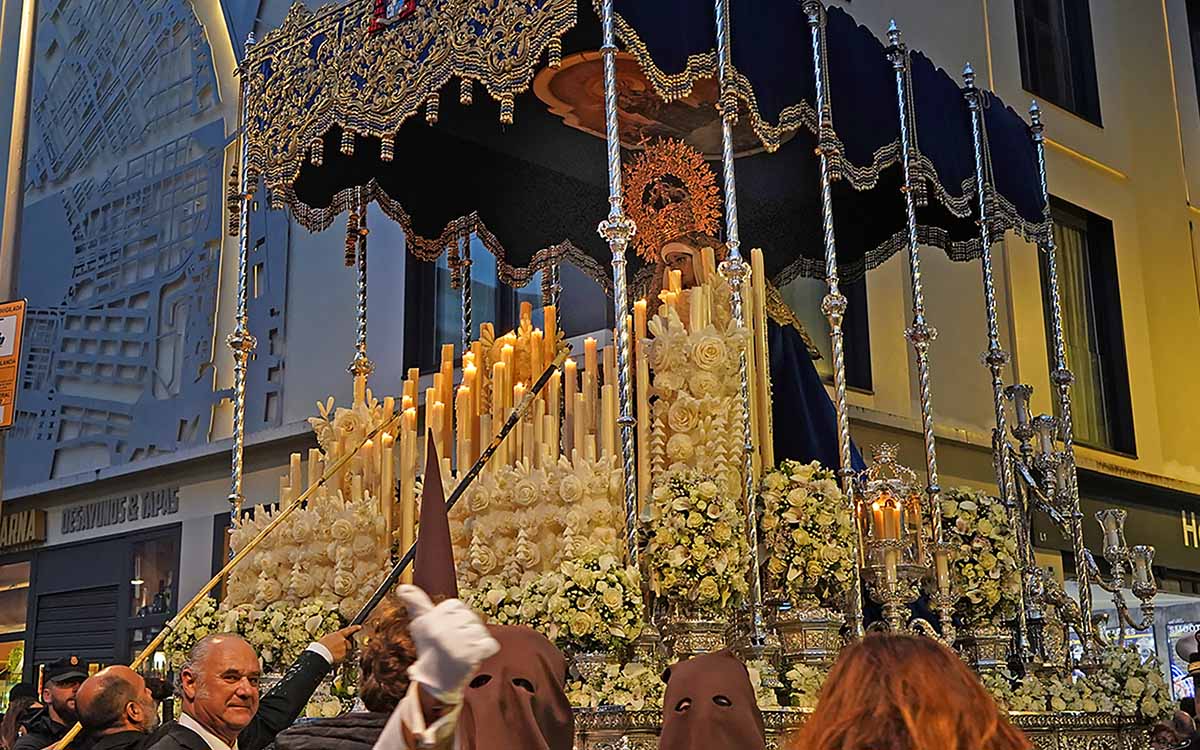
Photo: Mariana Kateivas/Best Destinations
Some brotherhoods are more traditional, centuries old, while others are more recent, just a decade old. There are processions along long paths, while others are just in the center. Others stand out for their band, while some draw attention for their silence and recollection.
The symbolisms are countless and each brotherhood has its own story. If the topic interests you, it's worth looking into it and researching it. One of the points of interest is its distinct images, which can have different meanings and techniques.
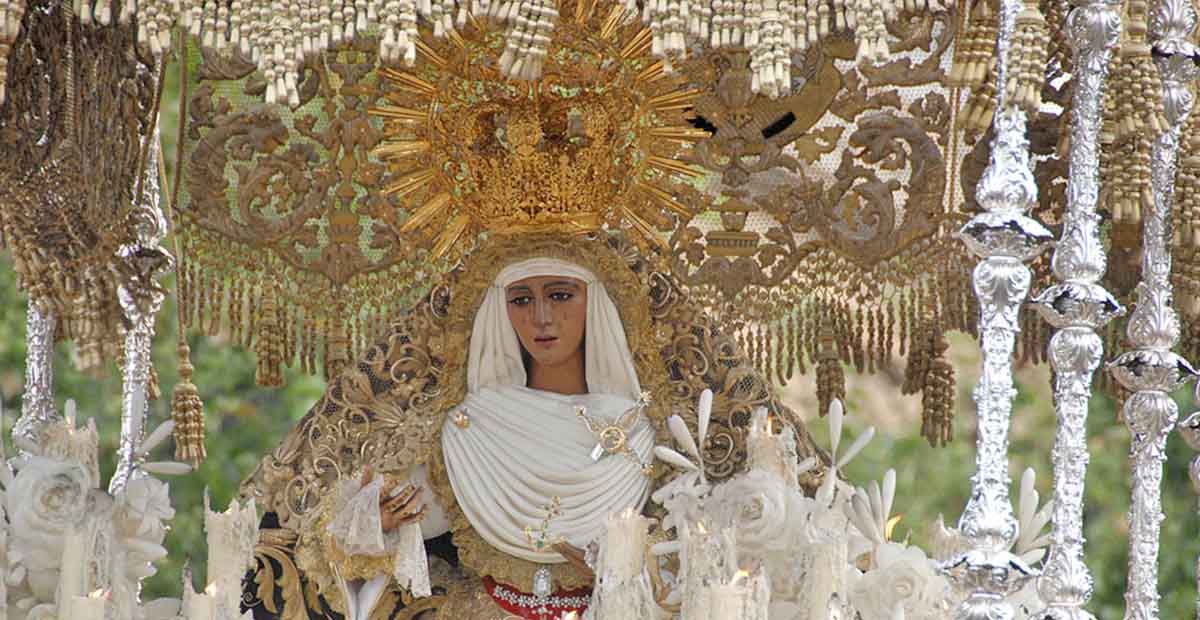
Photo: Visit Sevilla/Disclosure
It is also worth mentioning that there are processions every day of Holy Week, but the early hours of Thursday to Good Friday are the most important in the Catholic celebration in Seville, where the parade begins at 1 am and ends at noon.
What a Holy Week procession looks like in Seville
After hearing a lot about the traditional Holy Week in Seville, I was curious to see the historic celebration up close. Despite not being Catholic, I respect and am interested in learning about different religions.
As the processions usually start in the afternoon, I planned to arrive early to get a seat where I could watch each stage. The problem is that on the same day, it rained a lot in Seville and the program was almost suspended.
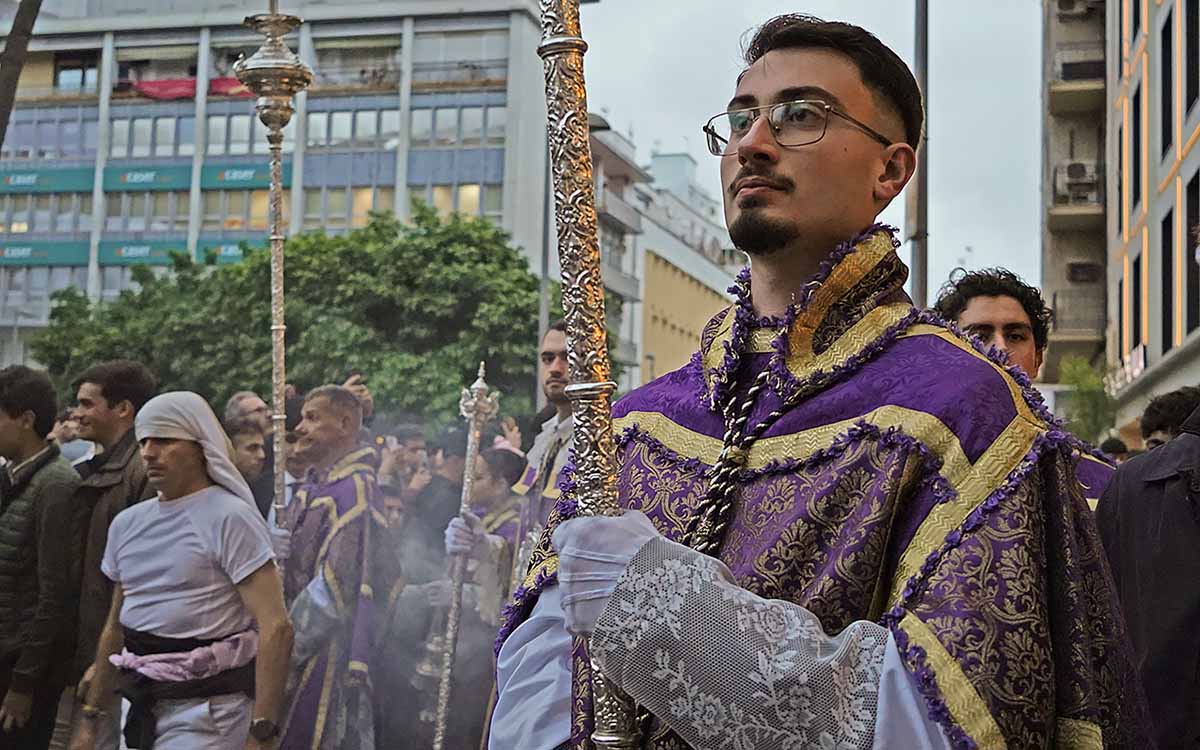
Photo: Mariana Kateivas/Best Destinations
It is worth mentioning that it is common to rain during Holy Week in Seville, as it is a time of changing seasons, which makes the weather more unstable.
The sad part is that as the sacred images are made of wood, they cannot be wet to remain preserved. In other words, on rainy days there may not be processions.
Luckily for me, the rain stopped and one of the brotherhoods decided to carry out the procession. For this, the image of Jesus was given a green raincoat and some items were covered in plastic. Despite changing the look of the “traditional procession”, I was happy not to have missed the trip and to be able to participate in this unique moment.
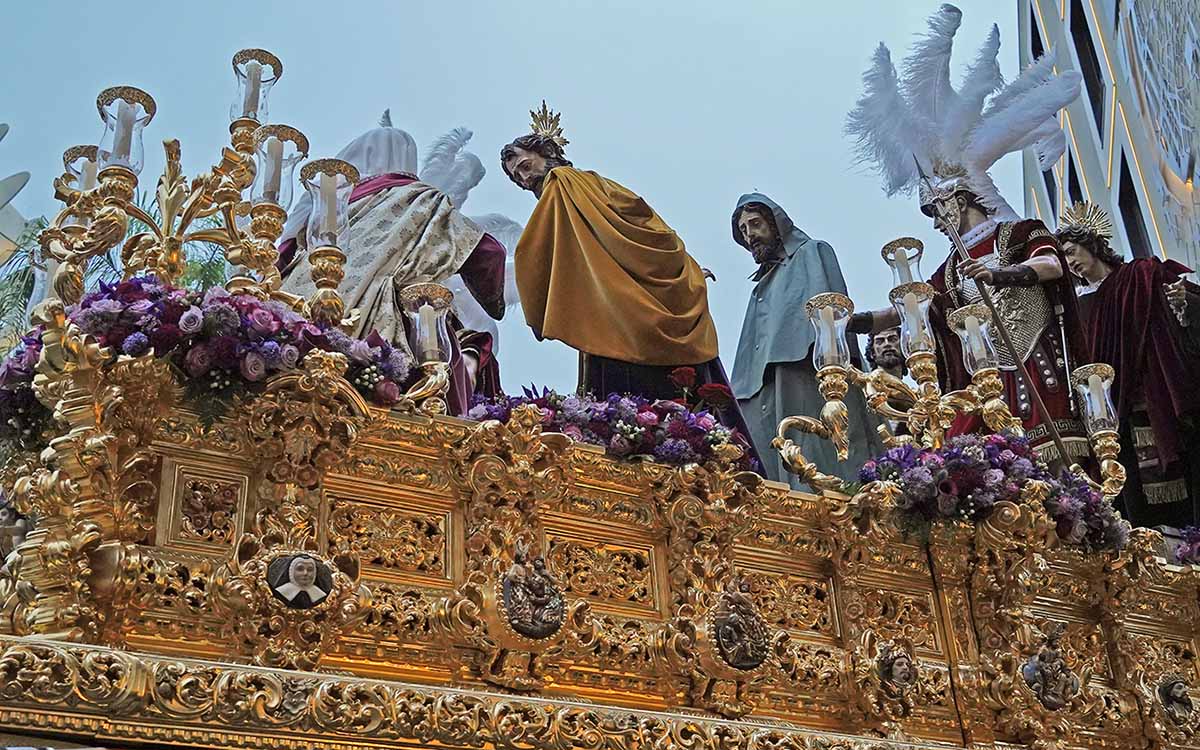
Photo: Mariana Kateivas/Best Destinations
Regardless of the weather, the streets in the center of Seville were full! I realized that I wasn't the only person willing to take the rain to be part of this tradition.
After finding a spot that allowed me to see the procession, I waited anxiously among the crowd of locals and tourists. It didn't take long to hear the sound of the Hermandad del Carmen band.
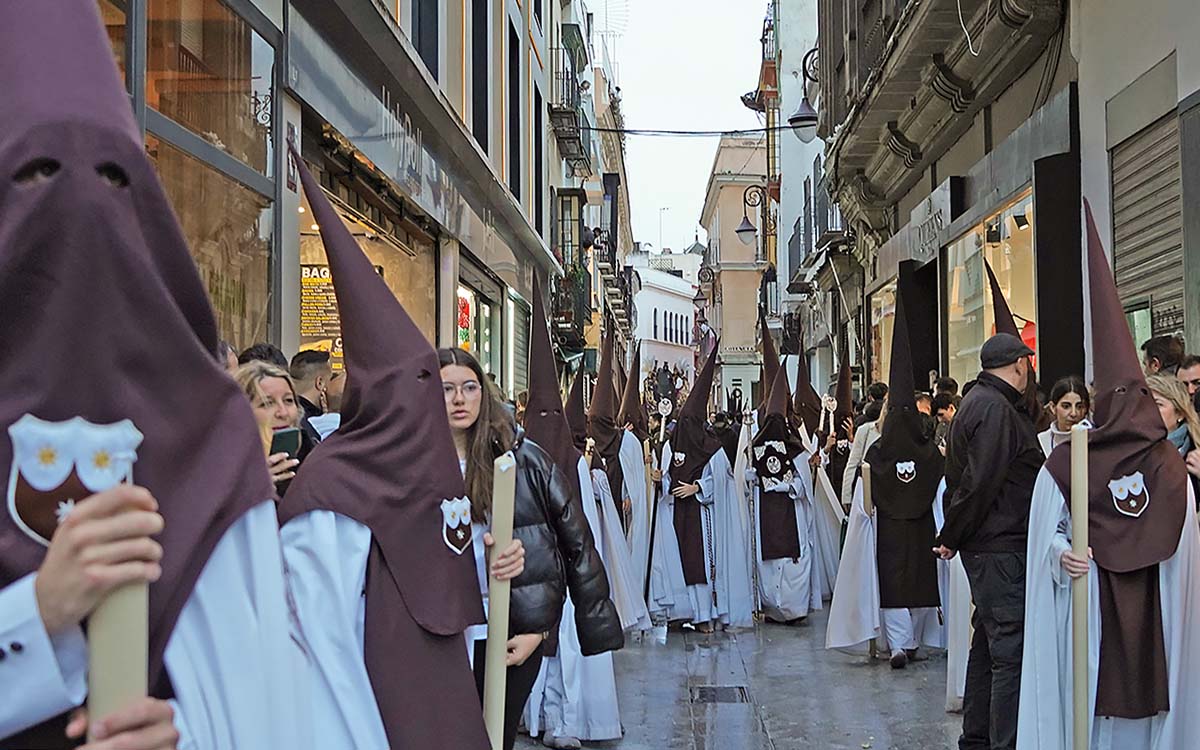
Photo: Mariana Kateivas/Best Destinations
Soon the Nazarenes began to appear, with their white tunics and brown capirotes. Although it is not possible to identify them, it is easy to see children, young people, adults and elderly people among them – something interesting knowing that the tradition is being passed down between generations.
Interestingly, some distributed sweets and others gave small cards with images of Jesus and Mary to those watching the procession.
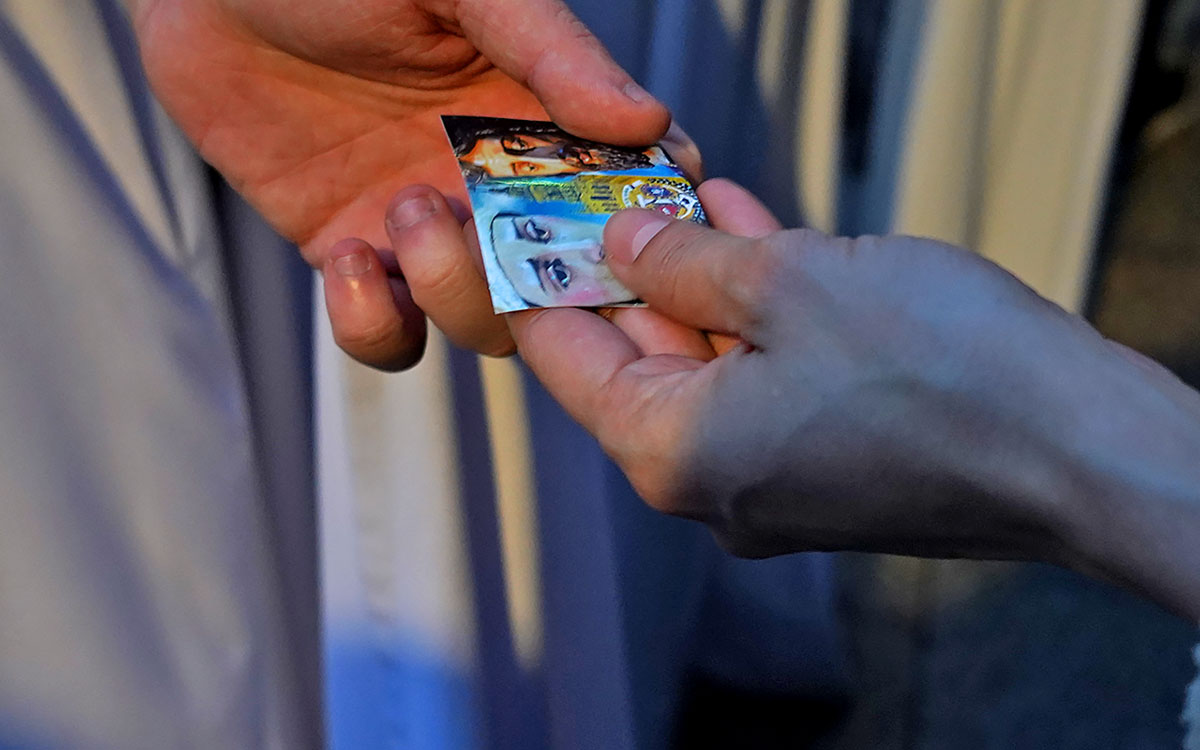
Photo: Mariana Kateivas/Best Destinations
Seeing the crowd gathered for a purpose of faith was impactful and enchanting. Without a doubt, it is a unique party. The richness of detail in the images and the commitment of the brotherhood participants surprised me.
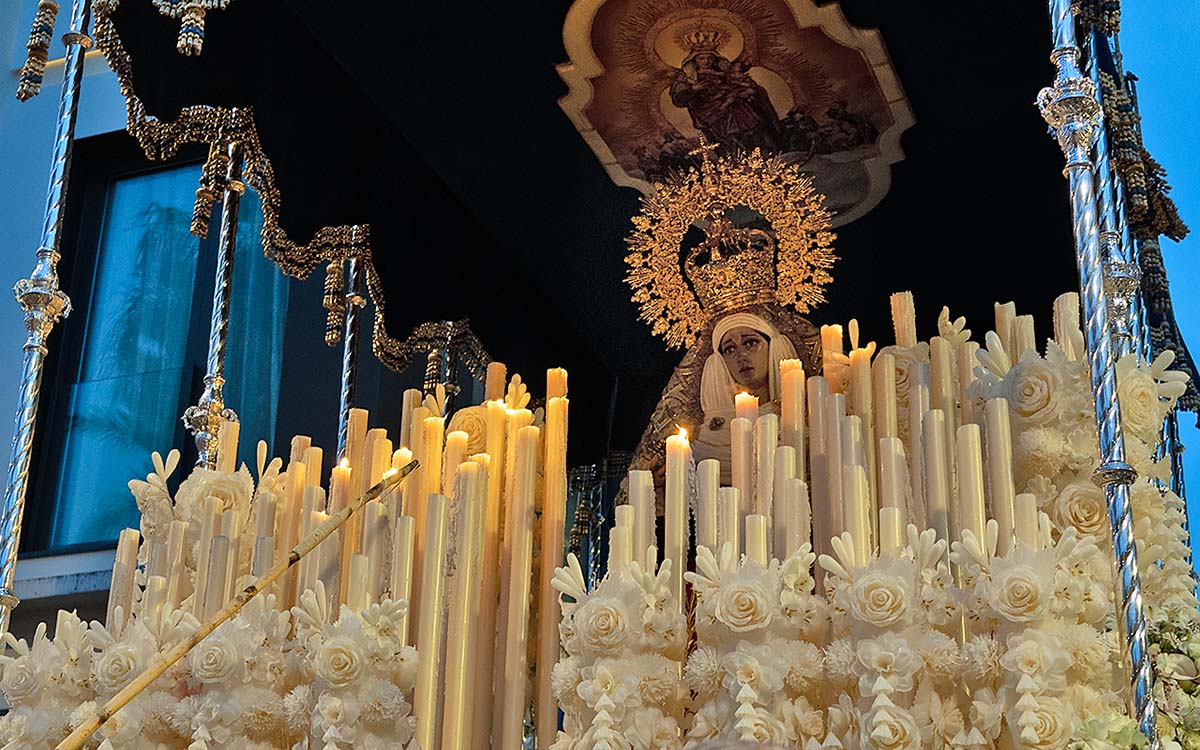
Photo: Mariana Kateivas/Best Destinations
I will definitely be back to follow the procession on a day without rain, complete with lit candles, incense and uncovered images. And I promise to come back to complement the post if I have new insights into this Sevillian tradition.
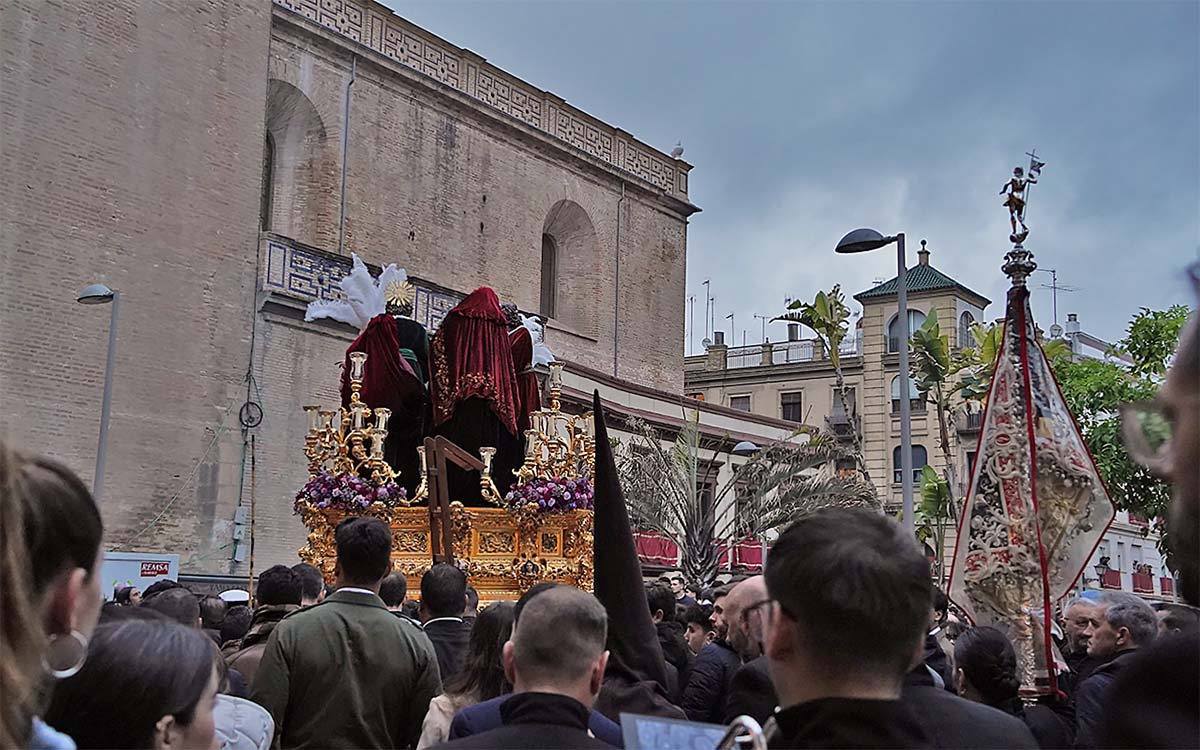
Photo: Mariana Kateivas/Best Destinations
If you want to know more about Holy Week in Seville, check out other information here.
